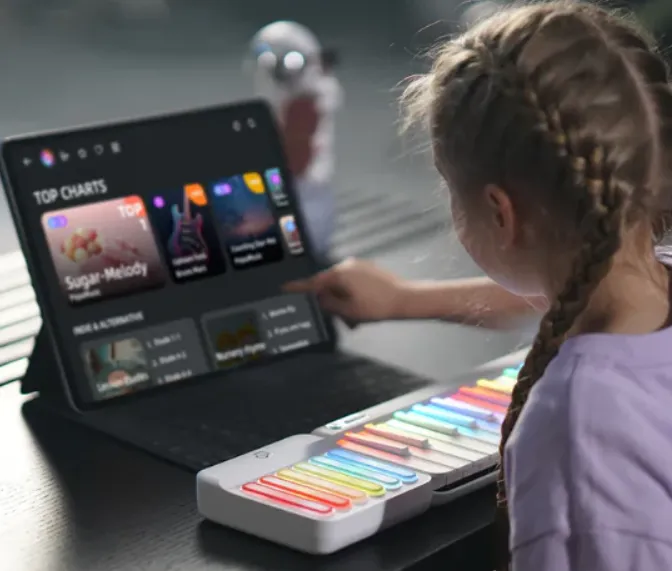With so many types of keyboards available, choosing the right one can be overwhelming. Whether you’re typing for work, gaming, or casual use, understanding the differences between various keyboards can help you make a better choice. Here’s a simple guide to help you explore the many types of keyboards and their specific uses.
What are the Different Types of Keyboards?
A keyboard is a device used to input text and commands into a computer. Over time, many variations have been developed to cater to different needs, whether it’s for general typing, gaming, or ergonomic purposes. Let’s take a look at some of the most popular types of keyboards available today.
1. Mechanical Keyboard
A mechanical keyboard is known for its durability and tactile feel. Each key has its own mechanical switch that provides feedback when pressed. This type of keyboard is popular among gamers and typists who need a responsive and long-lasting device.
Examples:
-
Corsair K95: Known for its strong keys and customizable lighting, favored by gamers.
-
Logitech G Pro: Compact, fast, and great for quick typing and gaming.
2. Membrane Keyboard
Membrane keyboards use a soft layer beneath the keys that sends signals when pressed. These are quieter and simpler compared to mechanical keyboards, making them ideal for office environments.
Examples:
-
Dell QuietKey: A quiet and simple keyboard, perfect for office use.
-
Logitech K120: A low-cost, reliable keyboard for home and school use.
3. Wireless Keyboard
Wireless keyboards eliminate the need for cables by connecting via Bluetooth or a USB receiver. They provide flexibility and help keep your desk organized.
Examples:
-
Logitech K780: A wireless keyboard that works seamlessly across multiple devices.
-
Microsoft Wireless Desktop 850: A reliable wireless option for home or office use.
4. Ergonomic Keyboard
Ergonomic keyboards are designed to reduce strain on your hands and wrists, offering a more natural typing position. These are especially helpful for people who type for extended periods.
Examples:
-
Microsoft Sculpt Ergonomic Keyboard: Features a curved shape to keep hands in a natural position.
-
Kinesis Advantage2: A split keyboard that helps reduce wrist strain.
5. Gaming Keyboard
Designed for gamers, these keyboards often feature customizable keys, backlighting, and faster key response. They are built to withstand heavy use and provide an edge in competitive gaming.
Examples:
-
Razer BlackWidow: A favorite among gamers for its responsive keys and colorful lights.
-
SteelSeries Apex Pro: Known for its fast response time and customizable features.
6. Virtual Keyboard
A virtual keyboard appears on a screen, allowing users to type without physical keys. It’s typically used on smartphones, tablets, or other touchscreen devices.
Examples:
-
Smartphone virtual keyboards: Common on mobile phones for typing messages.
-
Tablet on-screen keyboard: Present on most tablets for ease of use without physical hardware.
7. Flexible Keyboard
Flexible keyboards are soft and portable, made from a bendable material. These are ideal for travel and easy storage, as they can be rolled up when not in use.
Examples:
-
Jelly Comb Flexible Keyboard: Soft and portable, great for on-the-go use.
-
Perixx Periboard-512: A quiet and bendable keyboard, easy to pack and carry.
8. DVORAK Keyboard
The DVORAK keyboard layout is designed to increase typing speed and efficiency by minimizing finger movement. The keys are arranged differently than a standard QWERTY layout to optimize typing comfort.
Examples:
-
TypeMatrix 2030: A DVORAK layout keyboard designed for fast typing.
-
Kinesis Advantage2: A split keyboard supporting the DVORAK layout for easier typing.
9. Multimedia Keyboard
Multimedia keyboards are equipped with special keys to control media playback, volume, and other media-related functions. They are great for users who frequently work with videos and music.
Examples:
-
Logitech K120 Multimedia Keyboard: Includes dedicated media control buttons.
-
Microsoft Wired Multimedia Keyboard: Offers quick access to music and video controls.
10. Chiclet Keyboard
Chiclet keyboards have flat, small keys with a bit of space between them, giving them a clean, minimalistic look. They’re commonly found on laptops for a smooth typing experience.
Examples:
-
Apple MacBook Air: Uses a chiclet-style keyboard with a smooth typing feel.
-
Dell XPS 13: Features a comfortable chiclet keyboard design.
11. Backlit Keyboard
Backlit keyboards feature LED lights under the keys, making them ideal for low-light environments. Many backlit models allow users to adjust the lighting color or brightness.
Examples:
-
HP Pavilion Gaming Keyboard: Features customizable green backlighting, perfect for gamers.
-
Dell Inspiron Laptop Keyboard: Offers white backlighting for use in dark settings.
12. AZERTY Keyboard
AZERTY keyboards are commonly used in French-speaking countries like France and Belgium. The layout differs from the QWERTY keyboard, with specific keys rearranged to suit the French language.
Examples:
-
Logitech K120 AZERTY: A simple keyboard designed for French users.
-
HP Pavilion AZERTY Keyboard: Works well with French laptops for easy typing.
Conclusion
With so many types of keyboards to choose from, it’s important to select one that best suits your needs. Whether you’re typing for hours, playing games, or working with multimedia, there’s a keyboard designed for every task. If you’re new to keyboards, a membrane model may be a good starting point. But as you get more familiar, you might want to explore other types based on your preferences.
